
Profile



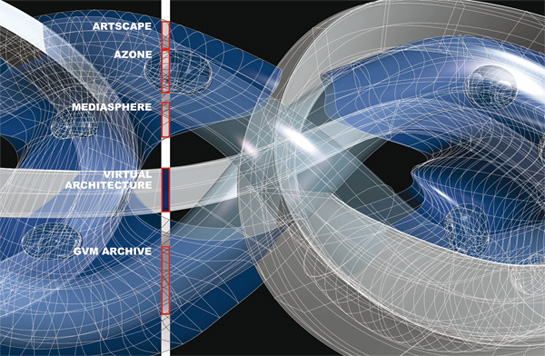
Hani Rashid / Asymptote
Hani Rashid and Lise Anne Couture’s projects demonstrated early on that architecture can be far more than just a physical presence. They are couple, both professionally and in private, and in their New York studio Asymptote work on the overlap of real and virtual space. Whereas their designs were initially still far removed from a concrete construction assignment, they are now planning a number of major projects around the globe. And they have no problem whatever switching from the dimensions of a skyscraper to those of a wrist watch.
Hani Rashid and Lise Anne Couture were already building things when they were not yet allowed to do so. With their designs for a virtual trading floor for the New York Stock Exchange and a virtual Guggenheim Museum they produced architecture intended solely for virtual space. They consciously suspended the conventions of “normal” architecture, the laws of gravity and load-bearing specifications, even materiality and budget questions. Instead they made time and changeability aspects, not to mention playing with human perception the parameters of a way of building heavily influenced by the media.
Both Hani Rashid and Lise Anne Couture’s first steps in the field of architecture were on a theoretical level. Rashid, who was born in 1958 in Cairo to a British mother and an Egyptian father, grew up in England and Canada, where he graduated with a BA in Architecture from Carleton University in Ottawa before taking a Master’s at Cranbrook Academy of Art in the USA. As early as 1989 when, together with Lise Anne Couture he founded a studio called Asymptote in New York, he assumed a teaching post at Columbia University, for which in 1992 he developed a program and in 1995 a digital design initiative. Following guest professorships and lectures at The Royal Danish Academy in Copenhagen, The Southern California Institute of Architecture in Los Angeles, Lund University in Sweden, and The Berlage Institute in Rotterdam, in 2007 he was appointed to the Kenzo Tange Chair at Harvard Graduate School of Design, and Professor at ETH in Zurich. Lise Anne Couture, who was born in 1959 in Montreal studied architecture at Yale, has likewise held several guest professorships at the universities of Princeton, Harvard, Columbia and Yale.
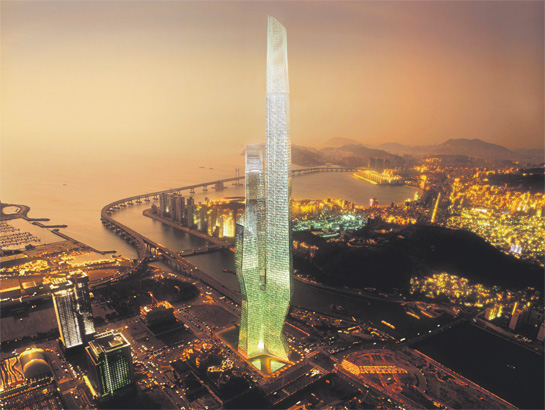
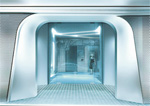
Whereas the early years were dominated almost entirely by theoretical and virtual projects, in 2002 the HydraPier pavilion at Haarlemmermeer in The Netherlands was their first building to be completed. With its organically soft formal language and highly technical futuristic appearance, the pavilion, located right next to the sea, attracted international attention and subsequent follow-on contracts. Their breakthrough came in 2006, when they won the competition for World Business Center in the South Korean city of Busan; at a height of 560 meters, it will in future be the tallest building in Asia. The striking design, consisting of three “fingers” of different height, varies in shape depending on the observer’s angle of vision and can never be captured in its entirety from any one perspective. Just one year later Hani Rashid and Lise Anne Couture won the competition for the Global City Center on the Malaysian island of Penang, a cohesive building complex embracing residential and working space, a hotel and cultural facilities, which, with its futuristic look, stands out clearly from the lush vegetation of its surroundings. With the Strata Tower, a luxurious apartment tower with a striking rotation, Asymptote is now also building an edifice in Abu Dhabi. Whereas from its design it seems as soft as if it had been shaped by the wind, with its tilted glass panel façade the apartment block currently under construction at 166 Perry Street in New York looks like a polished crystal.
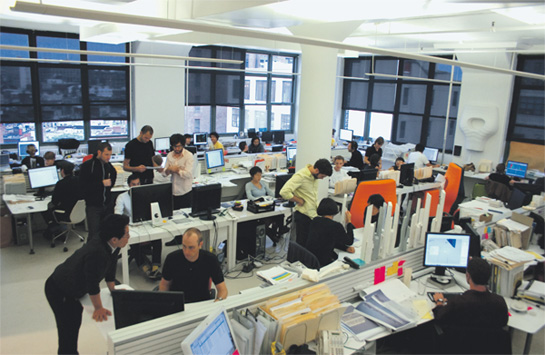
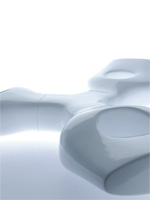
While buildings such as the Busan World Business Center soar more than half a kilometer high, they also manage to switch to effortlessly to products of finger-size proportions. Hani Rashid has, for example, designed a range of office accessories and wrist watches for the Italian design company Alessi, as well as a futuristic interpretation of the classic crystal chandelier for Zumtobel. For the “Ivo_03” table, a combination of a corrugated metal base and a glass table top, designed for the UK furniture brand Meta, 18th century production methods were even used, creating an exciting contrast with the design’s futuristic formal language. Hani Rashid and Lise Anne Couture have repeatedly displayed their works in the context of museums and exhibitions, such as in 2007 at documenta and in 2008 at the Architecture Biennale in Venice. The installation they exhibited there, “Prototyping the Future: Three Houses for the Subconscious” consists of several modular objects, which on the one hand evoke associations with bone and other organic shapes, while on the other not concealing a high-tech character.
The fact that despite ever larger building assignments they are still interested in “small” projects such as these is specifically part of their program. After all it is a case of exploring shapes, structures, and mechanisms on a small scale that can serve as a basis for actual buildings. As such not all their projects follow a concrete brief, but are frequently purely experimental in nature. Hani Rashid and Lise Anne Couture only moved out of their old studio on Broadway in August this year to a new location further west in the direction of the Hudson River. Here there is enough space for a team that has now gown to more than 70 in number and for the desired workshop character to be preserved. We can certainly look forward to the designs that will emerge from it over the next few years.